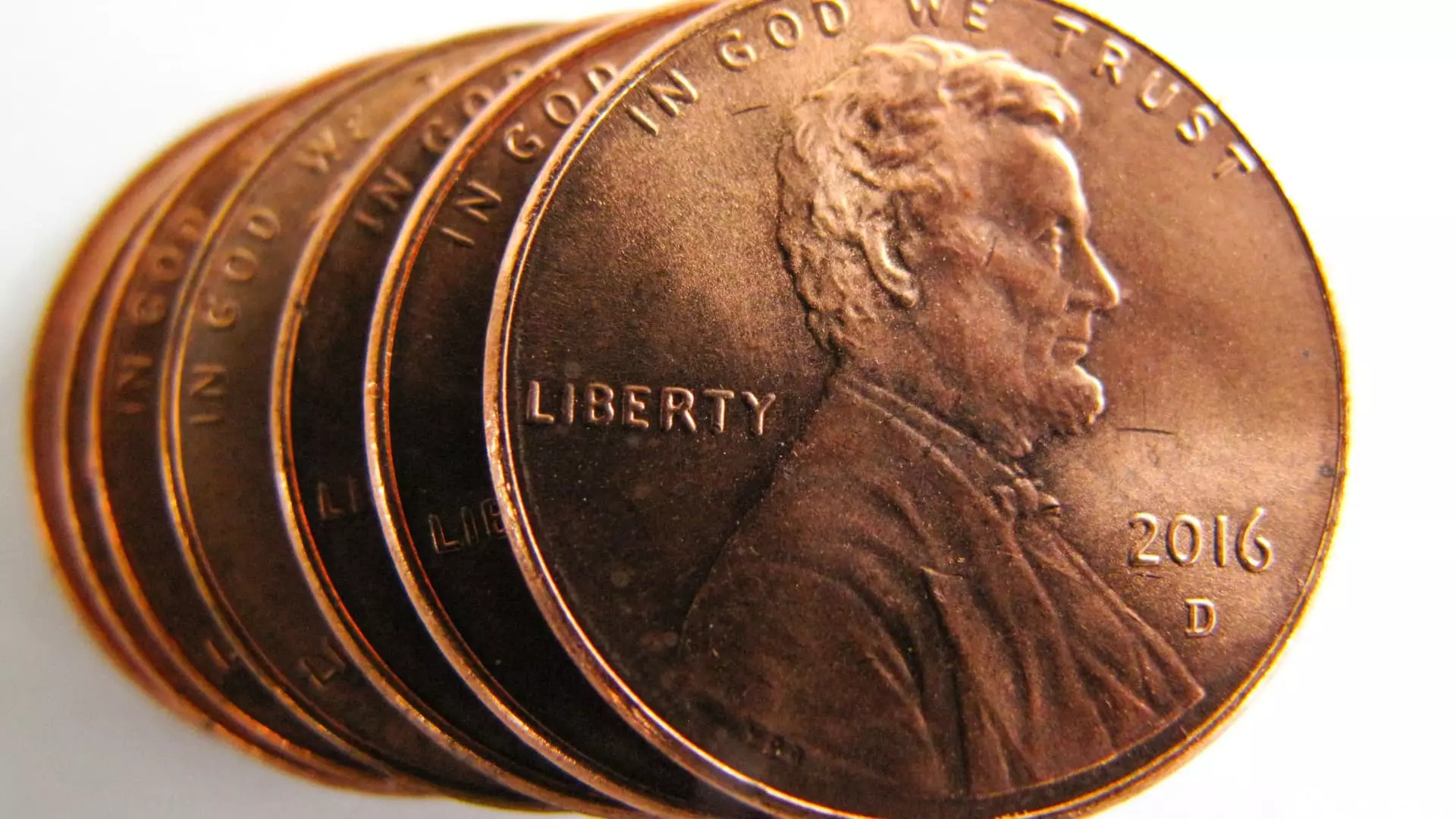The impending demise of the U.S. penny symbolizes both a shift in fiscal pragmatism and a stark indictment of governmental mismanagement. Once deemed an everyday currency, the penny has increasingly become more of a financial burden than a benefit. As it stands, each penny costs 3.69 cents to manufacture—an absurd reality that raises fundamental questions about fiscal responsibility and efficiency. The recent move by the U.S. Treasury to cease production of this obsolete coin highlights a crucial reckoning: should we continue to produce currency that drains public resources under the slogan of preserving tradition?
Republican Senator Mike Lee has voiced concerns that echo the frustration of millions of taxpayers; no private enterprise would entertain such losses. This point isn’t merely a rhetorical flourish but an urgent call to action. The notion that producing something worth less than its cost should be a no-brainer for any reasonable administration, yet here we are, embroiled in a debate that seems almost ludicrous. Halting penny production is projected to save an estimated $85 million annually—arguably a drop in the ocean of government expenditure, but a critical step towards rationalizing our fiscal strategy.
The Cultural and Practical Implications of Abrupt Changes
While many nations have already phased out low-denomination coins—with countries like Canada successfully eliminating the penny in 2013—the U.S. persists in clinging to its cash-based heritage. The fear expressed by the Federal Reserve regarding the chaotic rush to redeem existing coins if removal is handled too hastily is a legitimate concern. However, this should not deter us from embracing modernization. The reality is that as we inch closer to a cashless society, the penny’s utility diminishes further. Admonishes arising from this situation should be directed at weighing the practical needs of society against nostalgic sentiments that no longer serve us.
The Economic Burden and the Call for Reform
As per the Treasury Department’s calculations, maintaining the status quo of penny minting drains a staggering $192 million annually—money that could otherwise be utilized toward more pressing national interests. Beyond mere savings, reforming our currency system could foster a more efficient economic landscape. For taxpayers already burdened with an ever-expanding federal budget, these measures could represent vital relief. Indeed, the path toward a more fiscally responsible government begins with small but significant changes, such as the cessation of penny production.
The sad irony is that the penny was once a celebrated symbol of American values, representing the common person’s contributions. Now, it has devolved into a relic—a symbol of inefficiency that mocks the very ideals it was meant to uphold. If we’re truly invested in bolstering the American economy, we must abandon this antiquated practice and focus our resources on innovations that support societal progress rather than stagnation. In this sense, the eventual farewell to the penny could serve as a mnemonic for understood change—a critical lesson in the responsibilities we owe to our economy and our citizens.


Leave a Reply